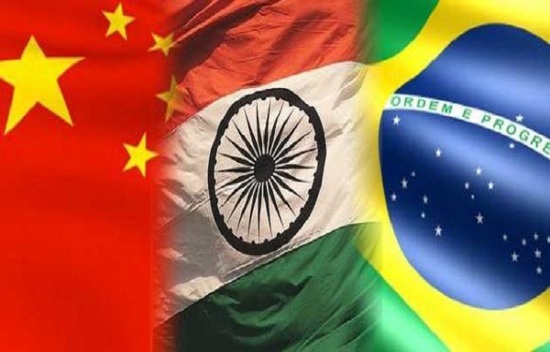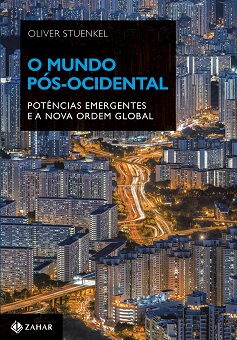Since Jim O’Neill coined the BRIC label nine years ago, a near-global consensus emerged that China, India and Brazil will become the first, second and fourth-largest economies over the next decades. Almost daily, we are showered with news about yet another discipline in which China has overtaken the United States (e.g. size of the car market), or how Brazil and India inexorably climb up the global rankings. The three countries’ increasingly assertive foreign policy proves their belief in their future power. Yet many forget that the three face formidable challenges on their way to the top. While even the most inept leader would be unable to hold back their ever-more dynamic economies, government action can do a lot to accelerate or slow down growth. Fundamental decisions taken now (for example with regards to education policy) are likely to affect the growth curve for decades to come. As China’s, India’s and Brazil’s transformation takes place at a much higher pace than almost any other in history, their governments are under high pressure to adapt to new realities.
One of the factors that will determine the pace of their future rise are China’s, India’s and Brazil’s capacity to innovate, increase economic productivity, and excel in the production of value-added products. China, for example, is avidly seeking to rebrand its image, move up-market and dominate industries traditionally located in the rich world. India virtually skipped the intermediate step of industrialization and moved directly into the service sectors. Brazil has turned into an agricultural powerhouse, but it is also increasingly focussing on value-added sectors, of which Embraer, the world’s third-largest producer of aircraft, is the country’s poster child. Yet in order to grow in these highly profitable businesses, a precious resource is necessary that is far more difficult to obtain than iron ore, coal and oil: China, India and Brazil need skilled workers to sustain their rise. Making education a policy priority is therefore crucial. Yet sound education policies take years to have an impact, and they are unable to satisfy short-term demands. The solution thus lies in a two-pronged approach: Ramp up education, and adopt a skills-based immigration policy. Even with the high number of IT specialists that leave Indian universities every year, Indian software companies have trouble filling their vacancies.
For Vale, Brazil’s mining giant, to realize its ambitious goal of becoming no.1 in the world, it does not need a small group of Nobel-Prize winning specialists, but thousands of skilled workers such as engineers, technicians and software developers, which it cannot find by merely searching on the domestic market. The same is true for future global champions such as India’s Tata and China’s Sinopec. Their battle to identify and hire these talents is becoming increasingly complex because rich countries, themselves facing an acute shortage of skilled workers, have begun to implement highly selective, skill-focused immigration policies that often deprive developing nations of their brightest. While China (1.3 billion), India (1.2 billion) and Brazil (200 million) all seem to have more than enough human capital, they cannot produce the sufficient number of highly skilled talents to satisfy their companies’ demands. China and India have the key advantage of a huge diaspora that often has done very well abroad, especially in the United States, where Indians and Chinese are the founders of many Silicon Valley start-ups. As the US economy stagnates and China and India show strong growth, many emigrés are returning to their homeland as they see more economic potential there. Brazil, on the other hand, can also point to four million of its citizens who live abroad, but they are not as well-educated and entrepreneurial as their Chinese and Indian counterparts.
While China could enjoy the immigration of Chinese top-level talents for years to come without changing its immigration policy, the Chinese government currently contemplates adopting a more progressive approach to attract more skilled workers from abroad. Legislation in India, on the other hand, is unlikely to change any time soon. The country most hard-pressed to adopt proactive immigration policies is Brazil, whose companies consider the skills shortage as a serious drag on their growth perspectives. While large Brazilian companies such as Odebrecht, a construction firm, or JBS, a giant in the food industry, can easily send their head hunters across the world and hire stars, Brazil’s small and medium-sized firms have virtually no chance to tap the international talent pool. As the small players are the suppliers to the big firms, Petrobras and Co. are also negatively affected.
Yet, while Brazil has been an immigrant country for centuries, and most Brazilians have immigrant ancestors, the influx of skilled workers has largely dried up, and Brazil lacks an actual immigration policy to attract top talents. More aggressive approaches, such as handing working visa to skilled university graduates from abroad who do not have a job yet, as practiced by the Canadian government, are unlikely to be politically viable in the short-term. Yet whether they like it or not, China, India and Brazil, will have to, just as the United States during its ascension, open its doors to talents from abroad to fuel its rise.
Image credit : Himansu/yohyoh









